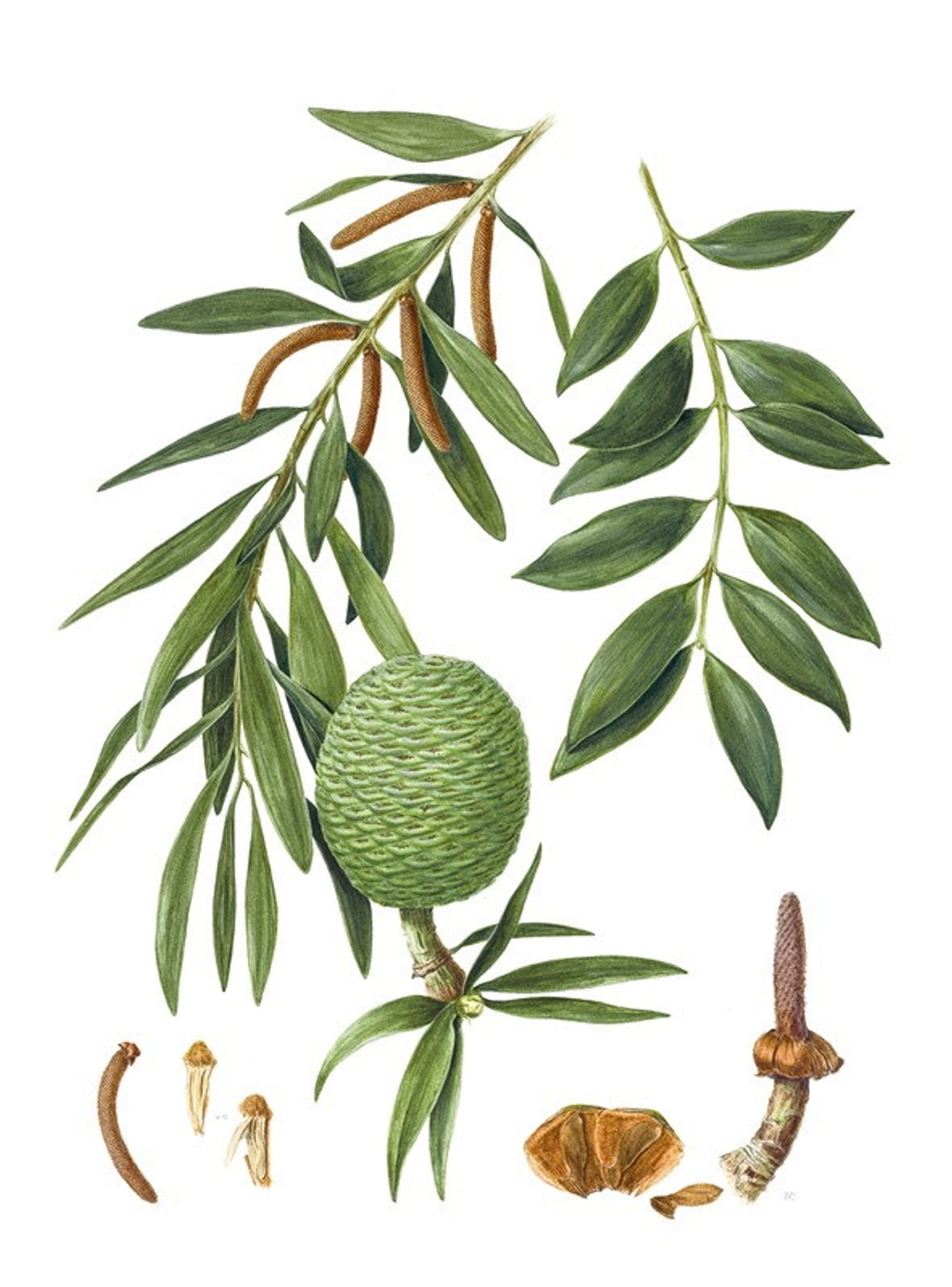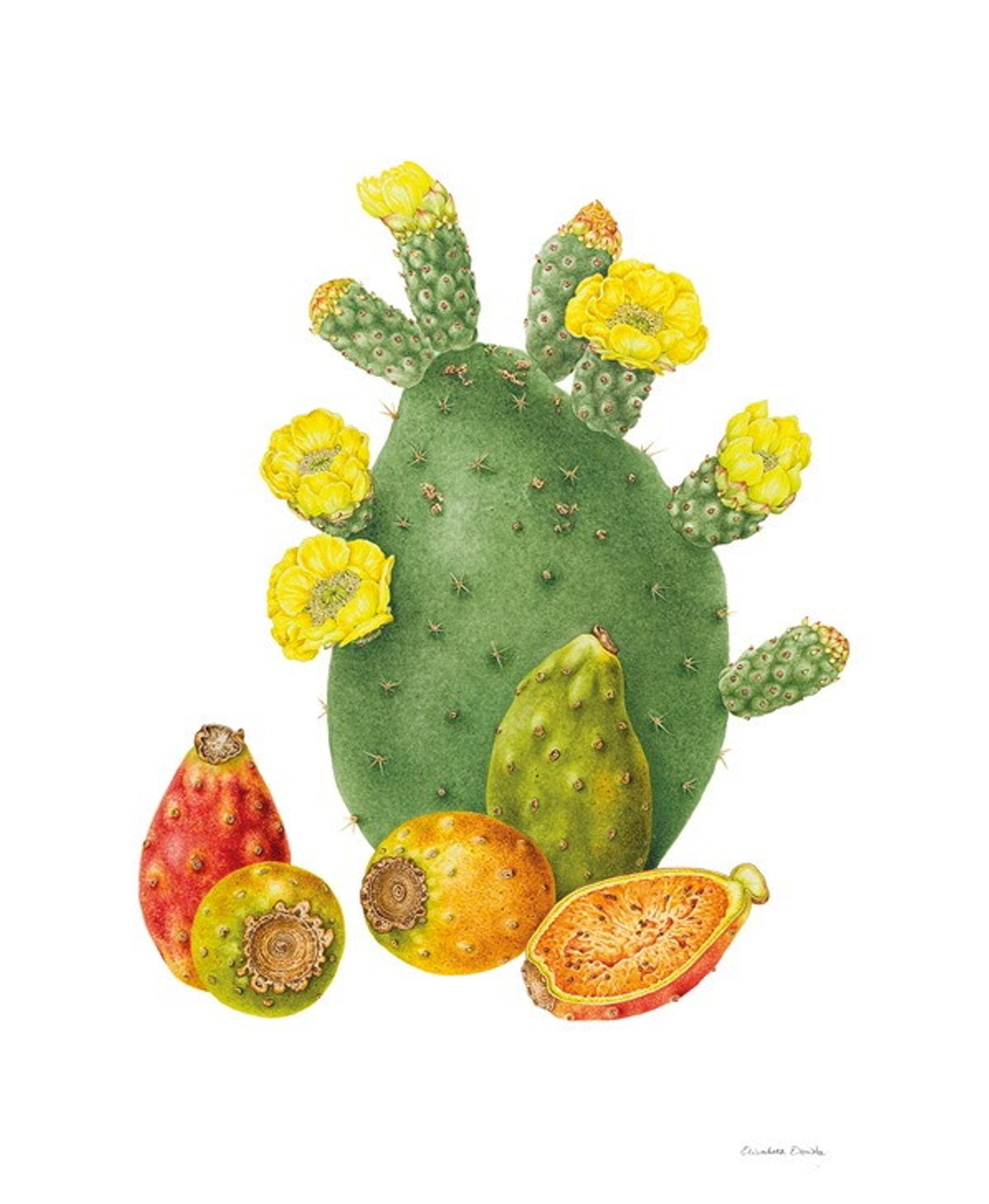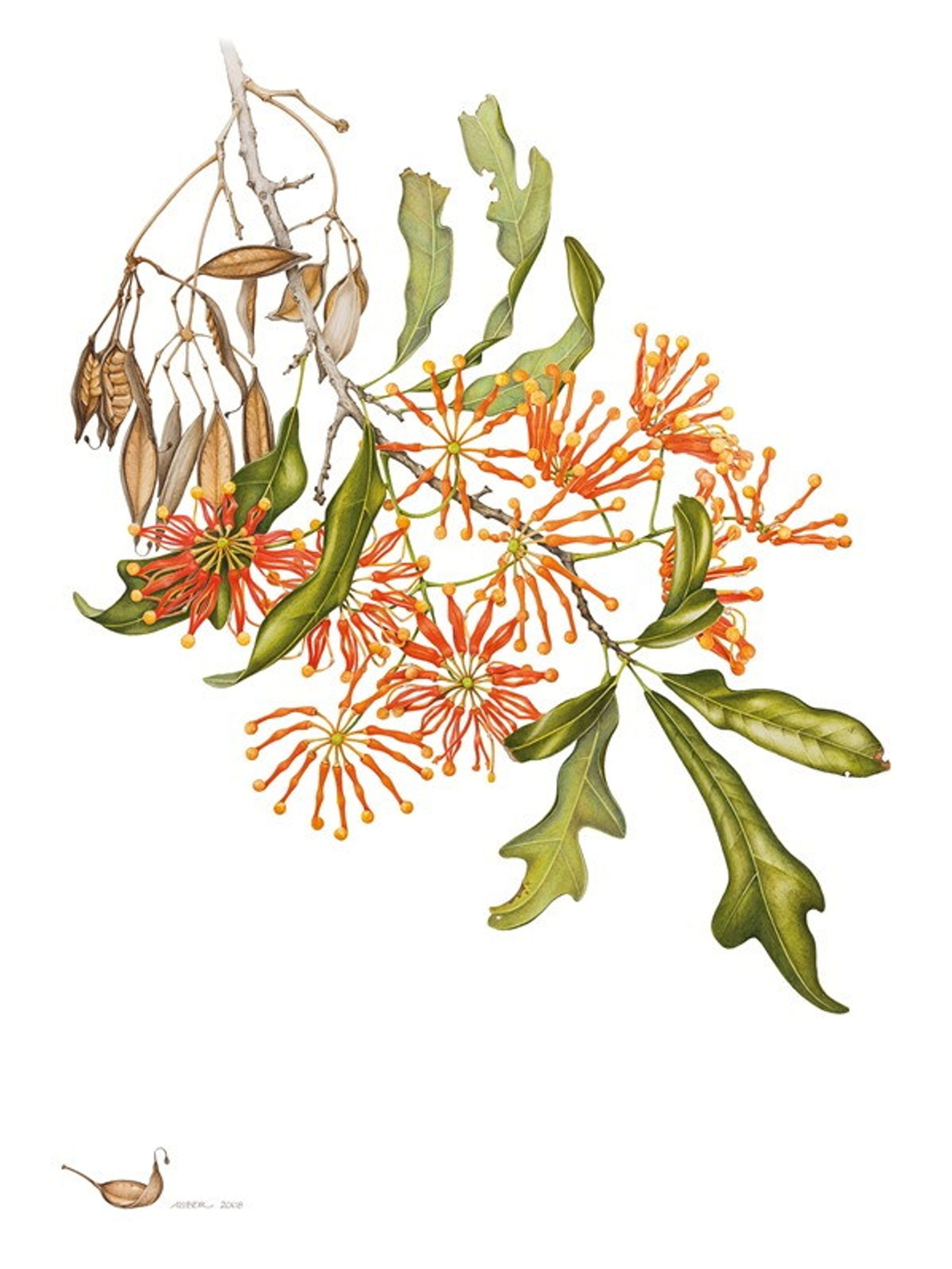Bunya pine
Araucaria bidwillii
Rouse Hill Estate
A sign of home
Owners of large 19th-century estates often planted tall trees around the house or homestead so they could orient themselves from the surrounding area. Bunya pines, with their majestic height and distinctive silhouettes, were perfectly suited to the task. Today the tall trees, with their umbrella-shaped canopies, often indicate where such a house stands or once stood.
At Rouse Hill Estate, bunya pines were planted between the 1850s and 1880s to create welcome shade for people and livestock, and to embellish the hillside with eye-catching greenery. Together with plantings of hoop pines, stone pines (a gift from Governor Macquarie, according to family tradition) and English oaks, they still dominate the skyline along the old Windsor Road.
Published on
Florilegium plants
Browse all
Florilegium plants
Queensland kauri pine
The kauri’s journey from the rainforests of Queensland to the garden at Elizabeth Bay illustrates the close links between gentlemen gardeners and the Botanic Garden

Florilegium plants
Prickly pear
The first Opuntia plants were introduced to NSW in 1788 in the hope of establishing a cochineal industry (prickly pears are host to the cochineal beetle, used in the manufacture of scarlet dye)

Florilegium plants
A gathering of flowers: the Florilegium collection
Finely detailed botanical artworks reveal the range of plants introduced to Sydney’s gardens over the past 200 years

Florilegium plants
Florilegium: plant stories from our gardens
Native plants and exotic species from abroad have shaped Sydney’s gardens from the earliest days of the colony. Through the tales of their discovery, collection and exchange, and the horticultural trends that drove their popularity, our gardens reveal captivating stories spanning more than 200 years